 One of the most asked questions of authors (after the most stupid question in the world - “Have I read anything by you?”) is “Where do you get your ideas from?” Some authors, especially those who write about the field in which they work, such as crime or medical, have an easy answer to that. They’ve either seen it or done it and are just winding it into their plot for the entertainment of their readers. But some authors base their fiction on their own real-life experiences outside of their profession. After all, most of us have fallen in love, been on a journey or had a traumatic experience, so all we are doing is turning it into fiction and perhaps adding a bit more pizzaz to it. For many, however, it is a slightly harder question to answer. 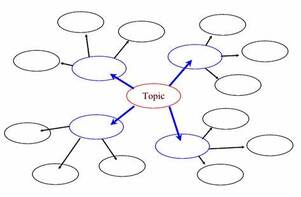 Brainstorm or mind map ideas Brainstorm or mind map ideas “It just popped into my head.” Sounds a bit lame, but that is really what happens for them. Other authors take a more structured approach and maybe do a bit of brain storming, writing words onto post-it notes and sticking them on the wall to see what jumps out at them. Or using writing prompts to get them going, which (spoiler alert) I’ll be covering in another blog next week. Others may watch TV or a film, or perhaps read a book and then think “That was pretty good, but it would have been so much better if the author had …” and then they write the same book their way. That isn’t plagiarism, by the way. At worst it is inspired imitation. There are several books I’d re-write differently if I had the time and if I do it well you probably wouldn’t recognise the original. 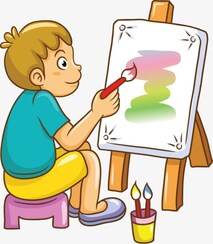 Visualise your idea. Visualise your idea. Some authors like to visualise things before they write them. For example, you might draw a picture of a house. You might then think about who lives in a house like that. Then you might think what could happen to those people that would upset their lives. Before you know it, you have both characters and a plot. I read about one quite well-known author (I’m sorry but I can’t remember his name) who drew each location he included in his plot so that he could get a “feel” for it. It also helped him to know where everything was in relation to other parts of the story. Others take their inspiration from life and use things they’ve heard or seen at work, in the street, at parties or wherever and then bulk them out until they become fully fledged stories. As an author I have used that latter approach. The fact is, no matter what method you use to start the story, the important thing is that it holds together as a plot and the characters are believable. 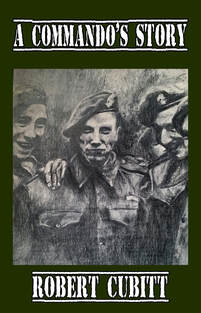 One of our authors came across some tape recordings his father had made for The National Army Museum, which recounted his experiences in the Army. It was for a project the museum was running at the time to capture the memories of old soldiers before they died and the stories were lost forever. He listened to his father’s voice and his first thought was to turn those stories into a book about his father, a mini-biography if you like. To do that he had to do a considerable amount of research about the commandos, their tactics and their battles so he could provide readers with the necessary background information to support and elaborate on his father’s words. But at the end of the process, when the book had been published (“A Commando’s Story” if you want to read it), the author realised he had all the material necessary to support an entire series of fictional stories set around the commandos of World War II. And so, the Carter’s Commandos series was born. One real-life story, told as an act of love and respect, turned into three years of work and six books (and still counting). "we all take inspiration from the work of others" There’s no doubt that we all take inspiration from the work of others. When it comes to sci-fi and fantasy, for example, there is little in real life that can provide the basis for a plot. Actually, that isn’t correct. Pretty much any story can be transferred into a mythical land or outer space or a dystopian future. It just requires the imagination to do it and that’s what most authors are good at: having a vivid imagination. It is said that there are only seven basic plots. All the author does to vary that is to change the context in which the story is set and add the characters. This idea was put forward by author and journalist Christopher Booker in his 2004 book, The Seven Basic Plots: Why We Tell Stories. He was also a co-founder of the satirical magazine Private Eye. So, what are those plots? 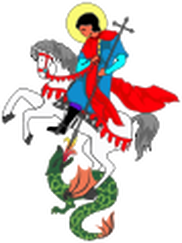 Overcoming a monster. Overcoming a monster. The first is overcoming a monster. That is the basis for a lot of horror, of course, but also a lot of fantasy and sci-fi. Also, within the sci-fi genre, overcoming a monster might include combatting a plague of some sort. Fans of Michael Chrichton will be familiar with the concept. However, it is often used by action-adventure novelists. James Bond has to overcome many monsters in his various adventures. It’s just that the monsters have names like Goldfinger, Blofeld, SMERSH or SPECTRE. The monster to be overcome can be any enemy, though they usually transcend just being “bad” to being completely evil. Peter Benchley's "Jaws" is also a story about overcoming a monster. Rags to riches. This was a popular theme during the Victorian era, with authors such as Dickens (it’s the basic plot for Oliver Twist) and also the fairy stories Cinderella and Aladdin), but it is still seen today, but more often in film. Brewster’s Millions, The Million Pound (or Dollar) Bank Note are typical, but there are many others. An important plot point in the rags to riches story is that the protagonist comes close to losing, or actually loses, their newfound wealth at some point and has to overcome adversity to gain it back. 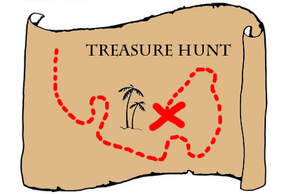 The quest The quest The quest. This is popular with fantasy novelists, but in sci-fi it is seen in the theme of space exploration and even historical fiction (Treasure Island is a quest). The Star Trek series is a typical quest, but sometimes also has to overcome a monster. Sometimes the quest takes a more abstract form. Jane Austen wrote a quest novel. After all, isn’t Elizabeth Bennet, in looking for a husband in Pride and Prejudice, embarking on a quest? Criminal investigations tend to use a lot of questing in order to identify the criminal(s), as does sci-fi that is seeking an antidote for a plague or a cure for a disease. Voyage and return. Well, if that isn’t The Hobbit, what is? It’s also Gulliver’s Travels and a whole lot more. The important thing about this plot and, also, the quest is that the protagonist learns something important along the way, usually about themselves. Bilbo Baggins, for example, finds out he is much braver and more resourceful than he thought.  Comedy. Pretty much any of the above plots can also be turned into a comedy, so I don’t fully buy it as a “plot” in its own right. However, if you set out to write a comedy it is important to be able to convey the humour. Far too many books we’ve read that are billed as comedies just aren’t funny. More than one commentator has said that Shakespeare’s comedies are less than funny. But maybe 16th and 17th century audiences understood the jokes better. Tragedy. The same applies to tragedy as it does for comedy, really. Any of the above plots can be turned into a tragedy by killing off either the protagonist, the protagonist’s love interest (if there is one) or their family. Hubris forms a great plot point in tragedy as it brings people down to earth with a bump. Pride cometh before a fall; how the mighty are fallen (and all that)! A book by Christopher Moore, called “Fool” turns the tragedy of King Lear into a comedy quite successfully, thus spinning the plot on its head  Like a phoenix from the flames Like a phoenix from the flames Rebirth. An interesting one this, because it isn’t a physical rebirth, it is usually a metaphorical one, though Frankenstein could be seen as a story of rebirth in a more literal sense. Like the quest and the voyage and return, it is about the character learning something and changing along the way, preferably for the better. However, a critical part of the rebirth plot is that the protagonist is either taken to the brink of death by their experience, or to the depths of despair. Only from those depths can rebirth take place. Much of religious fiction is about rebirth, as are stories that include battles with alcohol or drug addiction and battles with mental health. It is another important plot point that the protagonist, once reborn, is stronger in some way and not necessarily in physical terms. Of course, any two, or even three of those plots can be combined to create a single plot and this happens a lot in literature. So, seven basic plots, but millions of books that use those same seven. You wouldn’t think it possible, would you? "some people don’t agree with that concept " Of course, some people don’t agree with that concept and it has been much debated in the corridors of literary academia. There have been some authorities that have claimed both lower and higher figures. But all agree that the number of basic plots is finite and, more importantly, it’s quite a low number. There is also another rule in this plotting guide that not many people know they are using, but they use it anyway. It’s the rule of three.  So, it’s the third in a series of events that proves to be the decisive one. The third battle that wins the war, the third attempt at romance that leads to happy ever after, etc. This is most literally seen in fairy stories such as Goldilocks, where it is the third of the things that she tries in the three bears’ house that’s the one that’s just right. But the same principle applies in many different plots. For example, it takes three attempts (two failed or only partially successful) for the protagonist to achieve their ultimate goal. Or three events are cumulative in order to provide a final outcome. This is common in detective literature, where the significance of different clues add together to identify the criminal. The criminal isn’t just a left handed man, he is a left handed man who limps and also wears a monocle. Are you someone who uses the rule of three without realising that you were actually obeying a rule? Of course, you don’t have to obey that rule, but it is surprising how many authors do adhere to these conventions.  I don’t think many authors pay conscious attention to which of the seven plots they are using when they write their books. It doesn’t actually need a conscious decision. The plot may even start off using one of the plots structures and change direction later. For example, a quest might turn into a voyage and return or a rebirth. A plot may start off being a comedy but become tragic along the way and it may even return to being a comedy by the end. What is important, however, is that whatever plot(s) you use, they tell the story the way you wanted to tell it, whether it was inspired by something heard at a bus stop or by the life story of a relative, or even as a consequence of personal experience. Enjoy your writing, but don’t over-think it. If you have enjoyed this blog or found it informative, why not make sure you don't miss future editions, by signing up to our newsletter. For example, we'll send you a reminder about the one we're publishing next week relating to the use of writing prompts to generate story ideas. Just click the button below.
0 Comments
Leave a Reply. |
AuthorThis blog is compiled and curated by the Selfishgenie publishing team. Archives
June 2025
|
 RSS Feed
RSS Feed